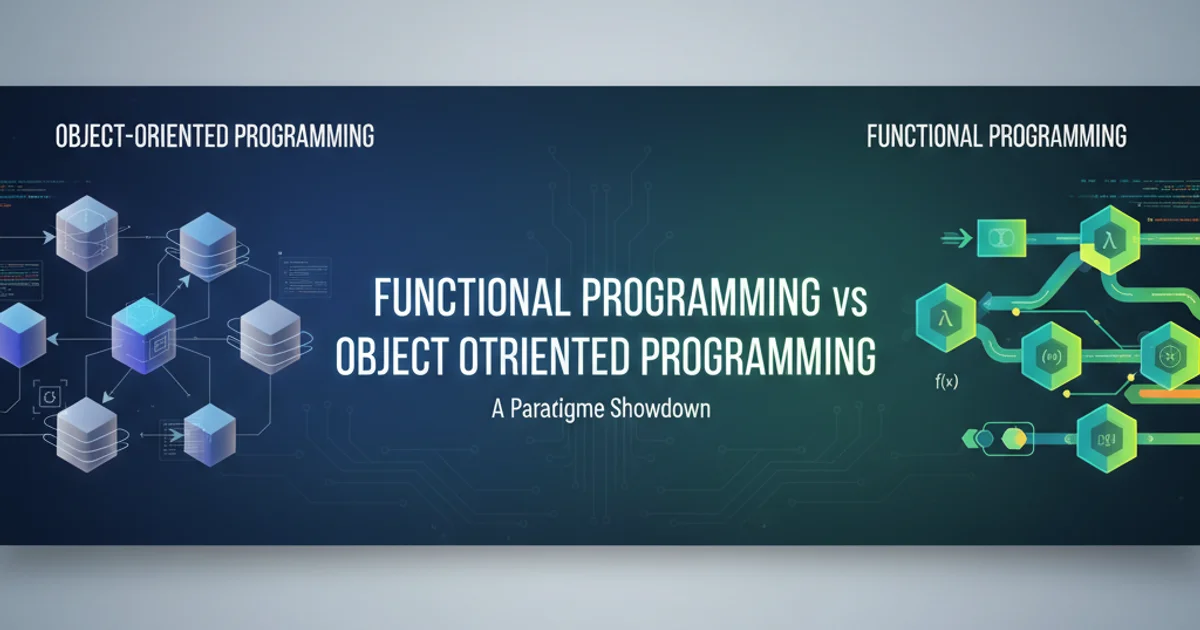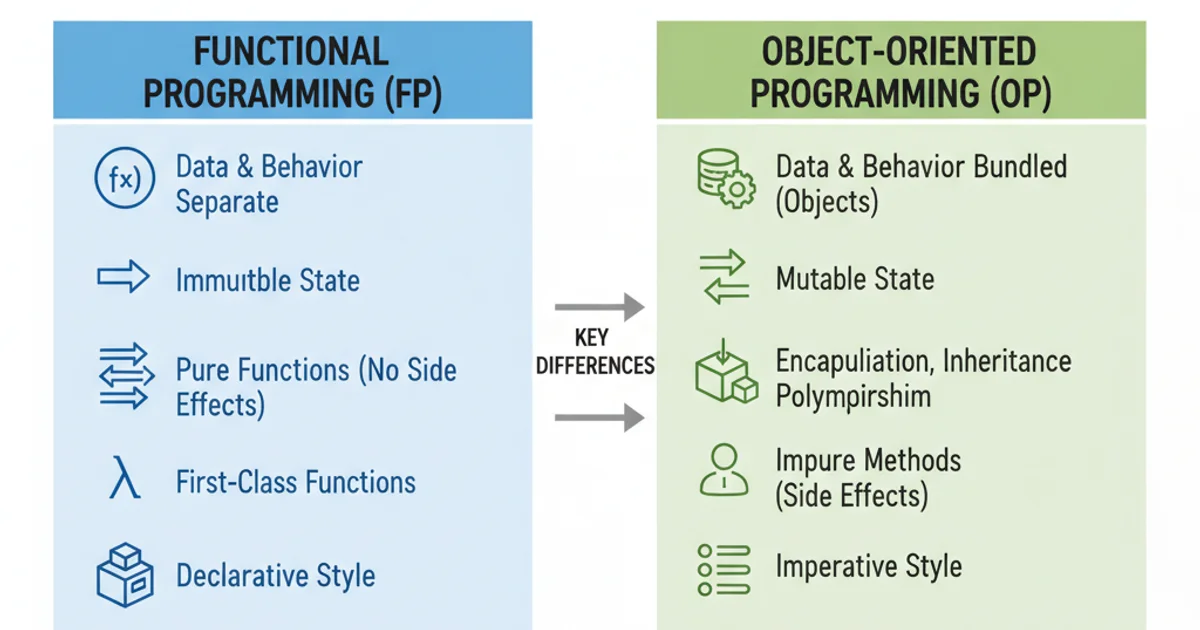Functional programming vs Object Oriented programming
Categories:
Functional Programming vs. Object-Oriented Programming: A Comprehensive Guide

Explore the core differences, advantages, and disadvantages of Functional Programming (FP) and Object-Oriented Programming (OOP) to help you choose the right paradigm for your projects.
In the vast landscape of software development, two programming paradigms have largely dominated discussions and implementations: Object-Oriented Programming (OOP) and Functional Programming (FP). Both offer distinct approaches to structuring code, managing data, and solving problems. Understanding their fundamental differences, strengths, and weaknesses is crucial for any developer looking to write efficient, maintainable, and scalable software. This article will delve into the core tenets of each paradigm, provide practical examples, and guide you in making informed decisions about when to apply them.
Understanding Object-Oriented Programming (OOP)
Object-Oriented Programming (OOP) is a paradigm based on the concept of "objects," which can contain data (attributes or properties) and code (methods or behaviors). The primary goal of OOP is to model real-world entities as software objects, promoting modularity and reusability. Key principles of OOP include:
- Encapsulation: Bundling data and methods that operate on the data within a single unit (an object), and restricting direct access to some of the object's components.
- Inheritance: A mechanism where a new class (subclass) can inherit properties and behaviors from an existing class (superclass), promoting code reuse.
- Polymorphism: The ability of an object to take on many forms, often allowing methods to be called on objects of different classes that respond in their own specific ways.
- Abstraction: Hiding complex implementation details and showing only the essential features of an object.
class Dog:
def __init__(self, name, breed):
self.name = name
self.breed = breed
def bark(self):
return f"{self.name} says Woof!"
class GoldenRetriever(Dog):
def __init__(self, name):
super().__init__(name, "Golden Retriever")
def fetch(self, item):
return f"{self.name} fetches the {item}!"
my_dog = GoldenRetriever("Buddy")
print(my_dog.bark()) # Output: Buddy says Woof!
print(my_dog.fetch("ball")) # Output: Buddy fetches the ball!
A simple Python example demonstrating OOP concepts like classes, objects, inheritance, and methods.
classDiagram
Animal <|-- Dog
Dog <|-- GoldenRetriever
class Animal{
+String name
+speak()
}
class Dog{
+String breed
+bark()
}
class GoldenRetriever{
+fetch(item)
}UML Class Diagram illustrating inheritance in an OOP context.
Understanding Functional Programming (FP)
Functional Programming (FP) is a paradigm that treats computation as the evaluation of mathematical functions and avoids changing state and mutable data. It emphasizes immutability, pure functions, and higher-order functions. Key concepts in FP include:
- Pure Functions: Functions that, given the same input, will always return the same output and produce no side effects (e.g., modifying global variables, I/O operations).
- Immutability: Data cannot be changed after it's created. Instead of modifying existing data, new data structures are created with the desired changes.
- First-Class Functions: Functions can be treated as values, passed as arguments to other functions, returned from functions, and assigned to variables.
- Higher-Order Functions: Functions that take other functions as arguments or return functions as their results (e.g.,
map,filter,reduce).
const add = (a, b) => a + b; // Pure function
const multiplyBy = (factor) => (num) => num * factor; // Higher-order function
const numbers = [1, 2, 3, 4, 5];
// Using map (higher-order function) with an immutable approach
const doubledNumbers = numbers.map(num => num * 2);
console.log(numbers); // Output: [1, 2, 3, 4, 5] (original array unchanged)
console.log(doubledNumbers); // Output: [2, 4, 6, 8, 10]
const multiplyByTwo = multiplyBy(2);
console.log(multiplyByTwo(5)); // Output: 10
A JavaScript example showcasing pure functions, higher-order functions, and immutability in FP.
flowchart LR
A[Input Data] --> B{Pure Function 1}
B --> C{Pure Function 2}
C --> D{Pure Function 3}
D --> E[Output Data]
subgraph No Side Effects
B
C
D
endFlowchart illustrating the concept of data flowing through pure functions in FP without side effects.
Choosing the Right Paradigm
The choice between OOP and FP is not always an either/or decision; many modern languages support elements of both, allowing for multi-paradigm programming. The best approach often depends on the specific problem domain, team familiarity, and project requirements.
When to lean towards OOP:
- Modeling complex real-world entities with rich behaviors and states.
- Large-scale applications where clear separation of concerns and modularity are paramount.
- When dealing with graphical user interfaces (GUIs) or simulations where objects naturally represent visual components or simulated entities.
When to lean towards FP:
- Applications requiring high concurrency and parallelism, as immutability simplifies state management and avoids race conditions.
- Data transformation pipelines and complex calculations where data flows through a series of operations.
- When predictability and testability are critical, as pure functions are easier to reason about and test in isolation.
- Event-driven architectures and reactive programming.

Key Differences between OOP and FP